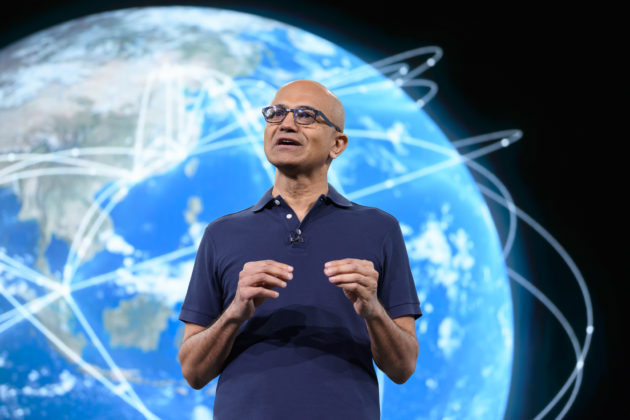
Things really began to change in December.
That’s when Microsoft’s Azure cloud platform started to lose some of its momentum, experiencing “moderated consumption growth,” in the words of Amy Hood, Microsoft’s chief financial officer, on its earnings call Tuesday afternoon.
Microsoft says Azure’s revenue growth was 38% for the quarter overall, adjusted for foreign currency fluctuations. That was already down from 46% growth a year ago. But by the end of December, the growth had slipped even more, to the mid-30% range. And Microsoft says it could drop another 4 to 5 points next quarter.
Many parts of Microsoft’s business are showing signs of a storm. But if its results Tuesday were an instrument for measuring the tech economy, this change in the cloud is as close as the industry will get to a barometer.
“Just as we saw customers accelerate their digital spend during the pandemic, we’re now seeing them optimize that spend,” Microsoft CEO Satya Nadella said in his prepared remarks to analysts and investors on the earnings call. “Also, organizations are exercising caution given the macroeconomic uncertainty.”
In other words, companies are spending less, and trying to get more out of what they’re spending.
Microsoft was is the first big tech company to report earnings for the quarter ended Dec. 31. Companies including Amazon and Google, Microsoft’s main rivals in the cloud, will report their results next week.
The trends help to further explain why Microsoft is laying off 10,000 workers.
Among other new details, Microsoft revealed on the call that its employment continued to grow steadily during the 2022 calendar year, up 19% year-over-year. That put total employment at a record 232,000 before the cuts — about 11,000 more employees than previously known.

The economic trends played out in a variety of ways in Microsoft’s results.
- Overall revenue for the December quarter rose 2% to $52.7 billion, just short of Wall Street’s expectations. That was down from 20% growth a year ago.
- Profits dropped 7% to $17.4 billion, not counting a $1.2 billion charge related to the cutbacks, which was announced along with the layoffs in advance of earnings last week.
- Geographic differences also emerged. Performance in the U.S. “was weaker than expected,” although the company “saw strong execution in many regions around the world,” Hood said.
- The company saw slower growth in sales of standalone enterprise mobility and security products, and commercial versions of Windows offered separately from the Microsoft 365 suite.
- Its results also reflected the global advertising slump. Microsoft’s revenue from search and news advertising rose 5% to $3.2 billion, after a consistent run of double-digit revenue growth stretching back nearly two years.
- LinkedIn, which relies heavily on spending for marketing and recruiting, saw revenue growth fall below 10% for the first time in more than three years, increasing 9.8% to $3.9 billion for the quarter.
- Some of Microsoft’s consumer businesses were hit especially hard. Windows revenue fell 27% to $4.8 billion, due to a sharp decline in the PC market. Consumers are worried about the economy, and turned off by high PC prices. Many people already bought PCs during the pandemic.
Microsoft expects many of these trends to continue.
The company gave overall guidance that would add up to revenue of $50.5 billion to $51.5 billion for the March quarter. The middle of that range translates into an increase of 3% from the same quarter a year ago. At the high end, that would be about $1 billion less than the $52.45 billion that had been expected by analysts.
Investors quickly made their feelings known.
After rising about 4% initially in after-hours trading Tuesday evening, Microsoft shares fell after the company gave its guidance for the upcoming quarter. Its shares are down 2% to $237 as of publication time Wednesday morning.
Even with these trends, Nadella expressed confidence in the long-term growth of the tech economy. He pointed to the company’s bet on AI, including its expanded investment in OpenAI, as a driver of its future growth, and said Microsoft remains convinced that “digital spend as a percentage of GDP is only going to increase.”



